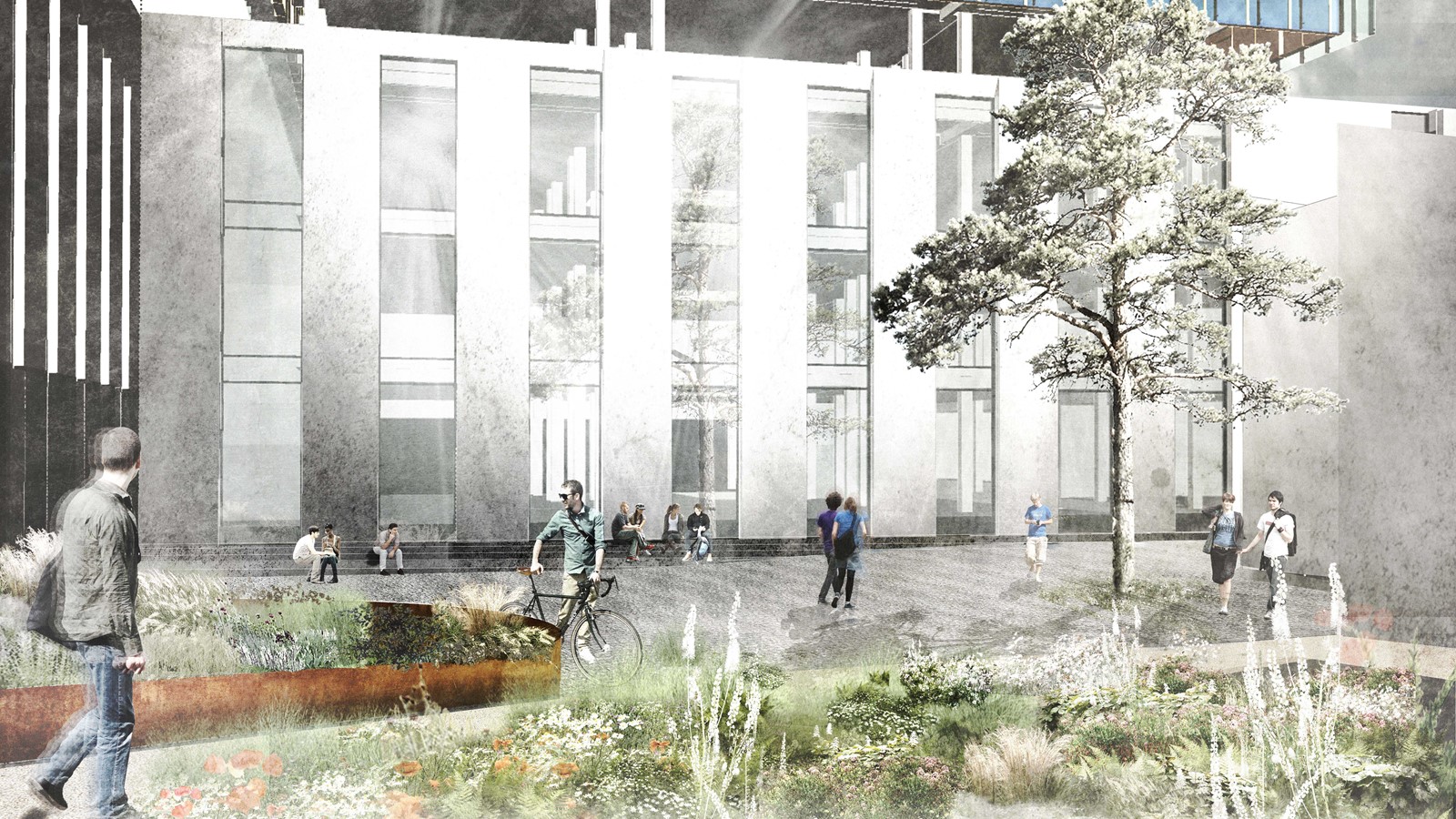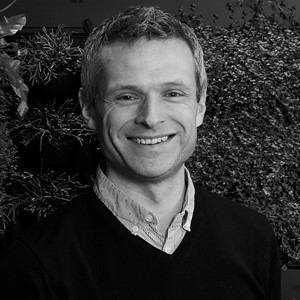Project Darwin
“Building a new biology”. HarrisonStevens were appointed to provide landscape proposals for the new multi-million pound research facility at King's Buildings Campus.
- Year
- 2015
- Location
- Edinburgh
- Category
- Campus
- Client
- University of Edinburgh
- Value
- £2.5m
- Size
- 3Ha
Tree of life
Charles Darwin (1809–1882) used the concept of a tree of life in the context of his theory of evolution. The tips of the branches show the species that are still alive today, but the tree also shows all the species that have existed in the past but are now extinct. Darwin explained: ‘From the first growth of the tree, many a limb and branch has decayed and dropped off; and these fallen branches of various sizes may represent those whole orders, families, and genera which have now no living representatives, and which are known to us only in a fossil state. We can use this metaphor in the detail aspects of the landscape and public realm, through etched panels on seating and decorative drainage runs. The motif is then incorporated as an important wayfinding strategy. It is possible to use the design as both bold and subtle gestures. These operate as focal point sculptures or ground plane engravings that embellish the identity of the site.
Implementing the masterplan
The proposals begin to realise key principles set out in the Masterplan; outer edge community park, perimeter cycle and pedestrian routes, linear pedestrian routes in the heart of the campus and a new entrance and plaza to the main road through the campus. The Project Darwin site is part of the wider campus of the King’s Buildings to the southern edge of Edinburgh. The campus sits on the boundary between the cities urban edge and the countryside. The landscape design principles and approach in response to both the architectural solution presented by Feilden Clegg Bradley Studios and the wider campus master-plan currently being undertaken.
Engage with the Environment
The landscape proposals provide an attractive, functional and safe series of spaces which offer students, visitors and staff the opportunity to engage with the environment. The planting species will be chosen to minimise maintenance requirements and will provide seasonal colour and interest. Central to the project the courtyard provides a focus where the urban/rural link flows through and transitions from hard to soft. A focal tree to the north edge of the courtyard provides seasonal interest in blossom and autumn colour. The natural stone paving cubes will encourage moss to grow between the joints further expressing the landscape concept.
The steps carefully integrate the egress from the Darwin tower as well as offer informal seating. The steps and ramp leads down from an extended platform outside the tower that encourages use between interior and exterior space. The planted link runs from the courtyard to the southern boundary and takes up the level difference through a series of ramps and sculptured landforms. Rich seasonal planting in naturalised swathes soften the ramps and retaining walls. This extends around the southern end of the Waddington and onto the east side of the site; reinforcing the site concept of built form interlocking with the landscape.





